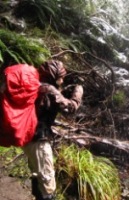|
|
 |
|
Clothing & Equipment ….just two little words- Pack Light!
|
|
|
|
Here is a list of what should go in your backpack. Depending on where you go just pick what you will actually need. |
|
Essentials
Security Keep your money, credit card and documents safe, by carrying them in a money belt around your waist, inside your shirt. But keep your ready cash elsewhere; regularly diving into your money belt is a dead giveaway. Padlock and chain can be used to lock a hostel door as well as your backpack to your bed or roof rack in a railway carriage or bus.
|
 |
|
Clothing Packing is of course depending on the destination of your trip, the seasons & the weather conditions in general.
Footwear
Sleeping & Living |
|
|
|
|
|
|
|
|
||||||||||||||

